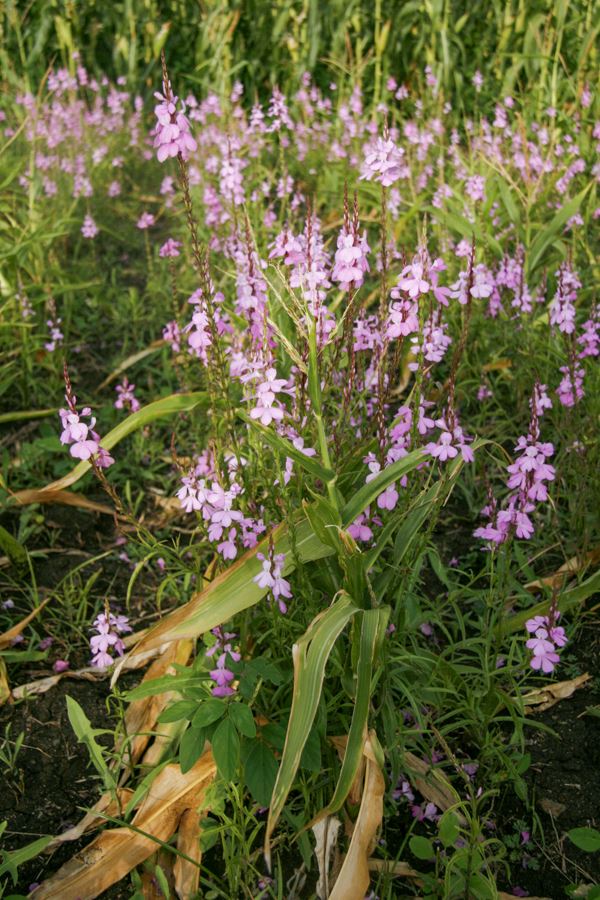Stemborers and striga weeds are major problems in maize production. Many farmers want to plant their maize fields under Push-Pull technology to control stemborers and striga weeds. But in many areas desmodium seed can be hard to obtain or some farmers cannot afford to buy the seed.
Push-pull farmers in Central Kenya have found a simple solution to this problem. Like sweet potatoes, desmodium can also be planted using vines. This can be an easy and cheap method to plant desmodium for many farmers.
This guide will explain to you how to plant your push-pull plot using desmodium vines.
Prepare your land
Clear your land during the dry season.
Plough and harrow your land to fine soil particles before the onset of the rains.
Plan to plant desmodium vines when there is enough rainfall and the soil is moist.
Select vines carefully (Figure 1)
When uprooting desmodium vines for planting, select mature vines with more than 3 nodes. Gently uproot entire vines with root nodes and hair roots. Take care not to damage hair roots.
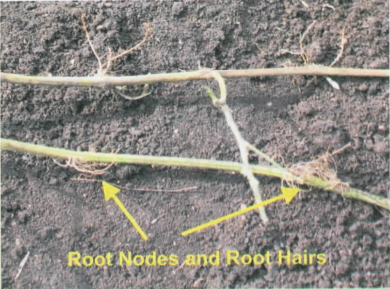
Plant Push-Pull plot using vines
Demarcate your Push-Pull plot to plant 3 rows of Napier grass around the border of your maize field.
Desmodium will be planted in between maize rows, so that the distance between desmodium rows is 75 cm, with the maize rows running directly in the middle of two desmodium rows. Mark the rows, 75 cm apart using strings. Using a hoe, make a furrow 2 cm deep along the strings (Figure 2).
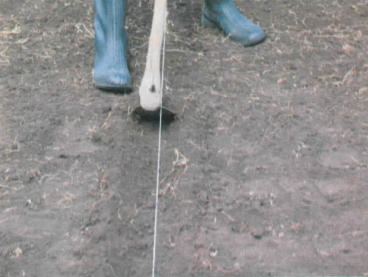
Place the cut vines in the furrows facing one direction, ensuring the hair root nodes are in the furrows. You may put TSP or DAP fertilizer or farmyard manure in the furrows – 50 kg TSP fertili of 2.5 bags of farm yard manure per acre. Cover the vines slightly with soil. Plant desmodium vine cuttings in continuous lines in all the furrows (Figure 3). Water the newly planted vines regularly (Figure 4). It is advisable to plant the vines during the rainy season when there is enough moisture in the soil. Plant your maize in rows alternating with the desmodium rows, at 75 cm intervals.
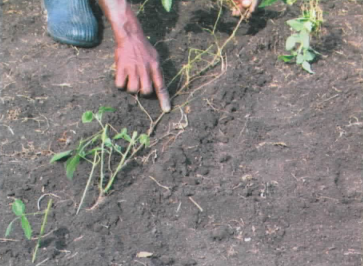
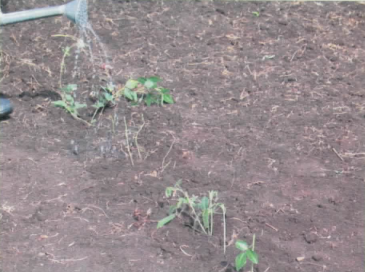
Manage desmodium properly
Early weeding is very important for the successful establishment of desmodium vines:
The first weeding should be carried out when the maize is three weeks old.
It is important to know the difference between desmodium and weeds. Care should be taken when weeding the desmodium. It is recommended that you use a sharp pointed stick to remove weeds growing in the desmodium.
The second weeding should be done when the maize is five weeks old.
You may weed the space between the desmodium and maize rows using a hand hoe.
Know when to harvest
After harvesting your maize crop, desmodium can either be:
Harvested as forage for livestock,
Or
Left to produce seed before it is harvested for forage.
If your desmodium is flowering and podding, you may leave it for seed production.

